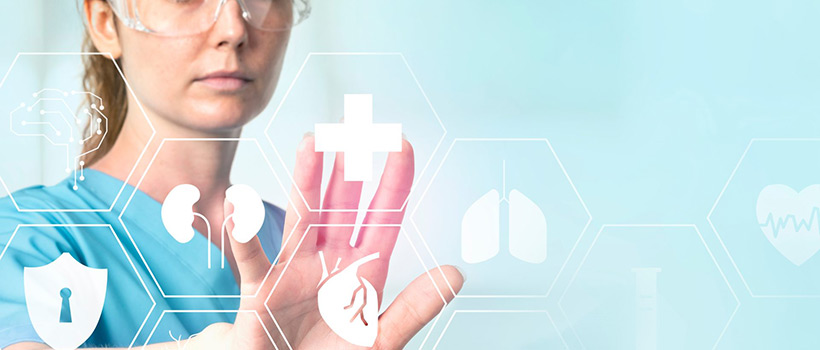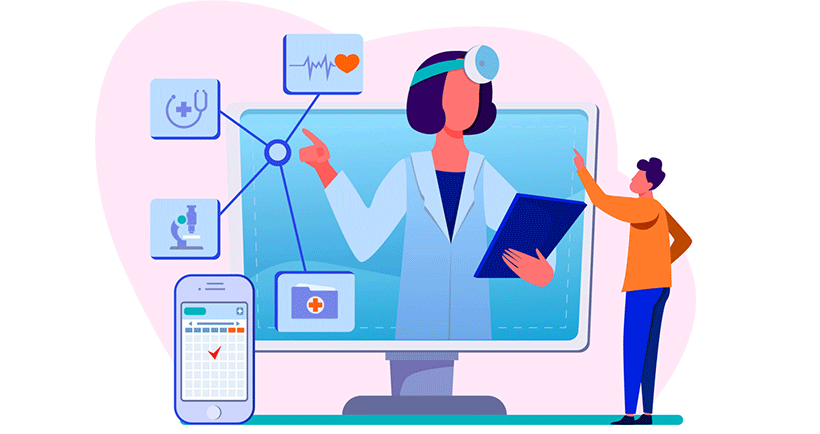The Dire Need for Network Monitoring in Healthcare
Entuity Software
The evolution of healthcare, from influential technology to the new role of the network
The healthcare industry has reached a new frontier. Though it was slower to digitalize and tends to take a more conservative approach to adopting technology than its counterparts in fintech or ecommerce, make no mistake: innovation is here.

Perhaps one of the most obvious paradigm shifts precipitating healthcare digitalization would be the undeniable transfer of power from provider to patient. In other words, healthcare has joined the ranks of other industries in the “on-demand economy.” Today, the patient experience is a success and compensation metric for hospitals and healthcare organizations in general, and there is no room for error.
Technology Advancements in the Healthcare Industry
Unsurprisingly, many influential technology initiatives aimed at affecting the patient experience continue to change healthcare as we know it and show no signs of stopping.
1. IoMT
The wide adoption of IoMT devices is one of the most standout technology initiatives with a strong foothold in healthcare, well poised to increase operational efficiency and optimize the administration of care. IoMT tools can collect, analyze, and transmit patient information, playing a major role in tracking and preventing chronic illnesses while simplifying clinical workflow management simultaneously, both inside care facilities and in remote locations.
2. Big Data and Predictive Analytics
Big data and predictive analytics are a natural outcome of IoMT, also with great potential to improve patient outcomes. It’s easy to figure out where the practically infinite masses of data are coming from: the aforementioned IoMT, hospital records, patient medical data, results of medical examinations, and biomedical research, to name a few. What’s not easy is demonstrating just how much of an impact big data and predictive analytics are making in healthcare (and health insurance), but commentary in a recent report by Healthbox on big data in healthcare summarized it well:
– James Gaston, Senior Director of Maturity Models, HIMSS Analytics
3. Patient Portals and Mobile Apps
Customized patient portals and/or mobile apps are part and parcel to integrated EHR/EMR systems, facilitating communication between healthcare providers and patients. They also allow healthcare providers to improve patient care using the data collected via the patient portal, as well as provide services such as telemedicine or electronic prescriptions.
4. Healthcare Data Interoperability
Many healthcare organizations have their sights set on continuing to advance interoperability with the hopes of facilitating the exchange, interpretation, and use of data between healthcare information technologies. Now that the Department of Health and Human Services (HHS) has finalized its rules that give individuals greater control in sharing health information, interoperability between providers and medtech developers is expected to improve.
With so much reliance on information technology comes increasing reliance on the network, especially as connected devices multiply at an unprecedented rate (the average number of connected medical devices per hospital room is 15-20 – you do the math).
For healthcare the bottom line is life and death, then profit and loss. Therefore, the network must deliver an extremely high level of reliability. Supporting an entire network infrastructure of connected solutions requires serious planning and knowledge of data flow, prioritization of devices connecting to the network, and how to get the visibility necessary to manage it all.
Consequences of technology innovations put serious pressure on the healthcare network
With the critical role that technology now plays, healthcare IT is facing quite a few consequential challenges that are putting serious pressure on the network.
- The amount of data generated 📈
The amount of self-multiplying data continuously generated in a hospital puts enormous strain on the network infrastructure, and the IT infrastructure as a whole. If a disruption occurs, a patient’s care can be negatively impacted, decreasing the ability of physicians to make the best possible choices. - Geographic disparity and systems decentralization 🌎📶🏥
It’s not uncommon for a healthcare organization to operate a central hospital system which contains their data center, as well as off-site clinics and doctor’s offices equipped with their own WiFi and connected remotely. These types of organizations are faced with the task of being able to monitor the availability and utilization of each of those networks and determining whether anything’s connected to any of them that shouldn’t be. - Legacy IT systems remaining in the infrastructure despite the adoption of new technology🕰💾
Although technology is advancing, not all hardware and medical equipment is following suit. It’s common to find legacy IT systems in hospitals because phasing out mainframe-based technology is a mammoth undertaking. At the same time, running legacy equipment opens the network up to a myriad of security issues. - Mergers and acquisitions are throwing monkey wrenches into the technological mix 🔥🚨
While not a result of the IT changes taking place in healthcare, mergers and acquisitions are introducing large amounts of assets into environments that never planned to support them. Suddenly IT teams are responsible for massively larger IT portfolios, figuring out how a merger impacts the network, and what to do to keep track of it.
Network Monitoring as the RX for Protecting Patients, Clinicians, and Care Facilities

“Every clinician and patient in a healthcare system should be able to get to the information and data they need at any given moment in their care journey. Your network monitoring solution needs to make sure that they can.”
-John Diamond, Senior Solutions Architect, Park Place Technologies”
One thing is certain: the network supports healthcare organizations and their ability to deliver quality patient care. As a result, network monitoring tools must be in place to allow network admins and analysts in medical settings to measure device use, spot suspicious behavior, and identify whether anything deviates from a normal baseline.
With so much reliance on connected medical equipment that’s prone to moving around facilities, hospitals need network management software that can detect change where possible and accommodate it in real time while eliminating administrative human overhead to do so.
Not to mention, network problems in medical settings tend to have massive downstream financial impacts on top of all the consequential operational chaos. Therefore, making sure that the network environment and its systems are working effectively is key to avoiding potentially devastating impacts.
It’s also worth mentioning that when it comes to the network, there’s a significant amount of gray area between “working” and “not working.” More specifically, it’s possible to lose a portion of data in certain transactions which applications and operating systems can cover for, but at the expense of network performance. This won’t introduce mass corruption, but certain activities may take longer than others because of latency and lack of responsiveness. In this scenario, network flow analysis software is helpful for monitoring responsiveness, as well as leveraging network fault monitoring for alerting and diagnosing problems that are cropping up in the network – which is a complex ecosystem, it should be noted.
If your health system lacks the internal resources you need to maximize uptime, learn about Park Place Technologies’ network management services today. Keep your critical systems functioning as expected with minimal errors.


